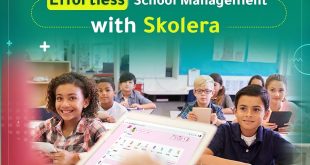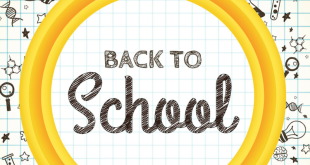Imagine this for a moment, you stand at the front of your classroom, eager to ignite your students’ curiosity and foster their love for learning. But as you look around, you notice different levels of engagement. Some students seem actually captivated, participating in discussions, and absorbing the content. Others, however, look disengaged, struggling to keep up or missing out on valuable learning opportunities. So how can we bridge this gap, ensuring that every student thrives in the learning process? The key is blending synchronous and asynchronous learning with an LMS.
Table of Contents
The difference between synchronous and asynchronous learning
Synchronous and asynchronous learning are two completely different approaches to education. Here’s a summary of the differences between both of them:
Synchronous Learning
Synchronous learning is a type of learning in which teachers and students engage in learning activities simultaneously. It involves live interaction and communication between them, typically sim,plified through EdTech platforms. During synchronous learning, students are expected to actively engage and attend scheduled classes, which encompass activities such as lectures, discussions, virtual classrooms, or webinars. Let’s look at some of its features:
-
Real-time interaction
Synchronous learning occurs in real time, where teachers and students engage in learning activities simultaneously.

-
Scheduled sessions
Learning activities are normally carried out at specific times; these include lectures, group discussions, or group work.
-
Immediate feedback
Teachers can provide immediate feedback to students, fostering active engagement and clarification of concepts.
-
Collaborative opportunities
Synchronous learning enables students to interact with their peers and participate in group activities, discussions, and debates.
-
Live communication
Usually, platforms like video calls, chat rooms, or webinars are used to simplify the interaction between the teacher and student.
-
Structured and time-bound
Synchronous learning follows a predetermined schedule, often mimicking traditional classroom settings.
This article also discusses synchronous and asynchronous learning. Check it out:
E-learning School: A Huge Shift in Education
Asynchronous Learning
Asynchronous learning is an approach used by teachers to allow students to have the flexibility of freely accessing the learning materials at their own pace and convenience. Students do not need to engage in live interaction with their teachers, unlike in synchronous learning. This greatly helps them as it gives them the space to learn independently without committing to a certain schedule. These are some of the features of asynchronous learning:
-
Flexible schedule
Asynchronous learning allows students to access learning materials and complete activities at their own pace and convenience.
-
Self-paced learning
Students have the freedom to choose when and where they engage with the learning content, enabling personalized learning experiences.
-
Delayed communication
Communication and interaction between teachers and students may not occur in real time, as responses to queries or discussions may have a time lag.
-
Reflection and processing time
Students have more time for critical thinking, reflection, and deeper engagement with the course content.
-
Individual focus
Asynchronous learning primarily focuses on individual learning experiences, as students may not have synchronous collaborative opportunities.

-
Accessible and convenient
Asynchronous learning accommodates different schedules and allows learners to revisit and review content whenever they need it.
Both synchronous and asynchronous learning have their advantages and are suitable for different contexts. Many educational institutions and online courses often incorporate a blend of both approaches to leverage the benefits of each and cater to diverse learner needs.
A study was conducted on asynchronous and synchronous distance learning during the COVID-19 pandemic in a medical college in Saudi Arabia. The researcher concluded that the students expressed equal levels of satisfaction, enjoyment, and comfort with both synchronous and asynchronous learning methods. The students shared their opinion that asynchronous learning helped in better time management, while synchronous learning fostered increased interaction during live lectures.
Blending Synchronous and Asynchronous Learning with an LMS
Now that we’ve explained the differences between synchronous and asynchronous learning, let’s discuss blending synchronous and asynchronous learning with a Learning Management System.
Blending Synchronous and Asynchronous Learning with Skolera’s Powerful Learning Management System
As providers of EdTech solutions, we totally realize the huge importance of providing captivating and different learning experiences for students. Adopting technology in education nowadays has opened the door to an unprecedented world of possibilities for teachers and students alike. At Skolera, we are proud to offer a powerful Learning Management System (LMS) that enables teachers to seamlessly blend synchronous and asynchronous learning approaches, taking their classrooms to new heights.
With Skolera’s LMS, teachers can use both synchronous and asynchronous learning methods to create a dynamic and flexible learning environment for each student. Synchronous learning allows for real-time interaction, fostering meaningful discussions and collaboration among students and teachers. Through features such as live video conferencing, chat functionality, and virtual classrooms, our LMS brings the classroom experience to life, regardless of physical location.
On the other hand, asynchronous learning gives students the freedom to learn at their own pace and according to their timetables. This is something that lots of students actually prefer nowadays!
With our LMS, you can easily upload and organize learning materials, including videos, reading texts, quizzes, and assignments. It’s a great advantage for students that they can access these resources anytime and anywhere, rendering their experiences more personalized and self-directed. Our LMS also provides interactive discussion boards and messaging features for teachers. These features allow asynchronous communication and even foster virtual class discussions.

Let’s start an exciting educational journey by integrating the forces of synchronous and asynchronous learning through Skolera’s rich Learning Management System (LMS)! Our LMS provides the flexibility and resources to achieve outstanding teaching objectives, whether you decide to carry out virtual classes, assign self-paced activities in class, or combine the two methods.
Our LMS also offers a variety of amazing features designed to enhance teacher efficiency and student engagement. You can easily create and provide interactive and engaging multimedia lessons, track student progress, provide feedback, and assess learning outcomes through our various assessment tools. Our LMS also provides robust analytics and reporting capabilities, allowing you to gain valuable insights into student performance, participation, and engagement.
At Skolera, we believe that a powerful LMS is not just about delivering content; it is about fostering meaningful connections, promoting collaboration, and empowering both teachers and students. Our LMS is designed to support your teaching journey, offering a user-friendly interface, comprehensive support, a powerful mobile app, and continuous updates to meet your evolving needs.
In summary, our powerful LMS enables you to seamlessly blend synchronous and asynchronous learning approaches, creating an engaging and flexible learning environment. Now you can join Skolera’s community to embrace the power of Educational Technology!
Related article: Apply Competency Based Learning & See The Difference!
Disadvantages of synchronous and asynchronous learning
After discussing their advantages, what are the disadvantages of synchronous learning? Does asynchronous learning come with problems? Do both completely cancel out their merits? Let’s find out!
When it comes to synchronous learning, one of the disadvantages includes time constraints. Some complain that synchronous learning requires students and teachers to be available at the same time for live classes. This can be challenging for students who have conflicting schedules or limited access to technology. It may also limit the flexibility of learning, as students need to follow a set schedule.
Another problem could be technical issues; synchronous learning heavily relies on stable internet connections and the proper functioning of the required technology tools, such as video conferencing platforms. Technical difficulties can disrupt the learning experience, causing frustration for both students and teachers. Sometimes, communication and participation might be compromised by poor audio or video quality, connection drops, or even compatibility problems; this might be quite frustrating for both teachers and students.
You should know that participation and engagement might be at stake too. Synchronous learning requires active participation and real-time debate from students, which may put pressure on some of those who are hesitant to speak up in front of a big group. Also, because some students might need more time for reflection or information processing than others, the speed of the lesson might not be adequate for all students’ learning requirements.
Furthermore, synchronous learning may be problematic for those students who have different learning preferences or who need extra assistance. Due to personal obligations or time zone differences, they may actually lose out on important information and opportunities for engagement with their classmates and teachers. This may make them feel excluded and interfere with their ability to learn as a whole.
In synchronous learning, the teacher-student ratio plays a huge role as well! For example, the amount of individualized attention and assistance students receive can be influenced by that. Sometimes, any opportunities for feedback and teacher engagement may be limited by large class numbers. Due to time limits, students may have little opportunity to address questions or get clarification during class.
Any overwhelming workload can be a problem for students as well. After all, synchronous learning often requires students to attend live classes, complete assignments, and participate in discussions within a shorter timeframe. Particularly if students are enrolled in several synchronous classes at once, this may result in a tremendous workload for them! It may also limit students’ ability to manage their time effectively and balance their academic and personal responsibilities.

With asynchronous education, the opposite disadvantages apply!
Unlike synchronous learning, asynchronous learning lacks immediate real-time interaction between students and teachers. Students may miss out on the spontaneous exchange of ideas, immediate feedback, and clarification of doubts that can occur in synchronous learning environments. This reduced interaction can impact the depth of discussions and the ability to build strong relationships among peers and instructors. Some students thrive on real-time interaction!
Furthermore, some students can be major procrastinators when they experience self-paced learning. Without set deadlines or live classes, these students may struggle to manage their time effectively and may be more prone to delay completing assignments or engaging with course materials. This may result in less motivated students, which ultimately affects how well they learn.
Some students may feel isolated as a result of asynchronous learning. A lack of social presence may make it difficult for students to establish relationships with their classmates and teachers. This could have a detrimental effect on the potential for collaborative learning.
Delayed feedback is typically one of the issues faced by some students. As opposed to synchronous learning, students in an asynchronous environment may take longer to receive feedback for assignments and questions. This delay can hinder students’ progress and limit the timely support they need to improve their understanding and performance. It may also create challenges in maintaining student motivation and engagement without immediate feedback.
Other than that, asynchronous learning heavily relies on technology for content delivery, discussion forums, and submission of assignments. Students normally need reliable internet access and proficiency in using online platforms and tools. Technical difficulties, limited access to technology, or inadequate digital skills can pose barriers to effective participation and learning in asynchronous environments. This is a problem that some schools fall into. Schools definitely need to consider the importance of teaching digital literacy to students from a young age.
Some parents complain that this type of learning places a higher demand on self-regulation and discipline for their children. Students must take the initiative themselves to manage their time effectively, stay motivated, and maintain consistent engagement with class materials. Not all students possess these skills!
The degree of independence offered can pose difficulties for some students who thrive in environments with greater guidance, as it may be harder for them to maintain focus on their learning objectives. Although some students are great at managing their time and school affairs, others require constant supervision to keep them focused.
It is important to note that these disadvantages can be mitigated with effective instructional design, supportive online platforms, and strategies to promote interaction. Providing clear guidelines, regular communication, opportunities for collaborative learning, and constant feedback can help address some of the challenges associated with synchronous and asynchronous learning.
Moreover, a well-designed mix of synchronous and asynchronous elements can merge the advantages of each method, culminating in a balanced and captivating learning journey for students. There is no right or wrong approach with students. School administrators should experiment and they will eventually reach a solution that satisfies the diverse array of students in the school.
5 Synchronous and asynchronous activities
If you’re looking for innovative ways to boost student engagement and promote active learning in your classroom, this is the place for you! Start using these synchronous and asynchronous activities for your students and let the change begin!
Synchronous Activities
– Live interactive lessons
Live interactive lessons are one of the keys to blending synchronous and asynchronous learning with an LMS! You may teach virtually, allowing students to interact with you and their classmates via live video or text-based discussions too. This interactive approach allows for immediate feedback, lively debates, and meaningful exchanges of ideas, creating an immersive learning experience.
– Virtual group projects
Teachers can also assign collaborative group projects that require students to work together synchronously. By making use of online collaboration tools in LMS solutions, students can actively engage in brainstorming, problem-solving, and knowledge sharing, fostering teamwork and enhancing their critical thinking skills.
– Gamified quizzes
You can use gamified LMS solutions that offer quizzes and interactive polls during live classes. By adopting this approach, your students will feel more excited as they are engaging in a friendly competition; this will motivate them to actively engage and put their knowledge to the test in an enjoyable manner.

Asynchronous Activities
– Self-paced assignments
Some teachers like to provide students with pre-recorded video lessons, reading materials, or online tutorials that they can access and complete at their own pace. This approach allows students to digest information at a comfortable speed and encourages self-directed learning.
– Discussion boards
Other teachers prefer to set up online discussion boards or forums where students can engage in asynchronous discussions. This platform encourages greater engagement and critical thinking by motivating students to participate in class debates, in-depth analyses, and meaningful reflections outside of a traditional classroom setting. It would be a fantastic exercise for social studies, English, or history courses!
– Multimedia projects
You may also assign them individual projects like making podcasts, presentations, or video content. For these types of activities, there are lots of educational platforms available. This method not only improves students’ creativity and digital literacy but also gives them a chance to express themselves and feel like they are in control of their education.
Combine both synchronous and asynchronous activities in the classroom and pave the way for a rich and exciting learning experience for your students. This approach not only encourages active participation but also fosters independence, collaboration, and critical thinking skills, preparing your students for success in the new digital age.
So, embrace the power of synchronous and asynchronous activities and watch your students thrive in an engaging and dynamic learning environment. Let their curiosity ignite, their creativity flourish, and their passion for learning soar! Together, let’s transform education and inspire a generation of active and enthusiastic learners. Blending synchronous and asynchronous learning with an LMS is the new way to transform your students’ capabilities!
Albert Einstein once said that “Education is not the learning of facts, but the training of the mind to think.” So, let’s train the minds of our students to think critically, collaborate effectively, and adapt to the challenges of our rapidly changing world. Change how you manage your classroom and learning journey with Skolera’s powerful Learning Management System. We now offer a free demo for teachers and school admins to try out Skolera’s solutions before committing to any payments! Get the chance to talk to one of our experts to guide you in your school’s transformational journey now.

 Skolera LMS Blog Educational Technology Articles and News
Skolera LMS Blog Educational Technology Articles and News




